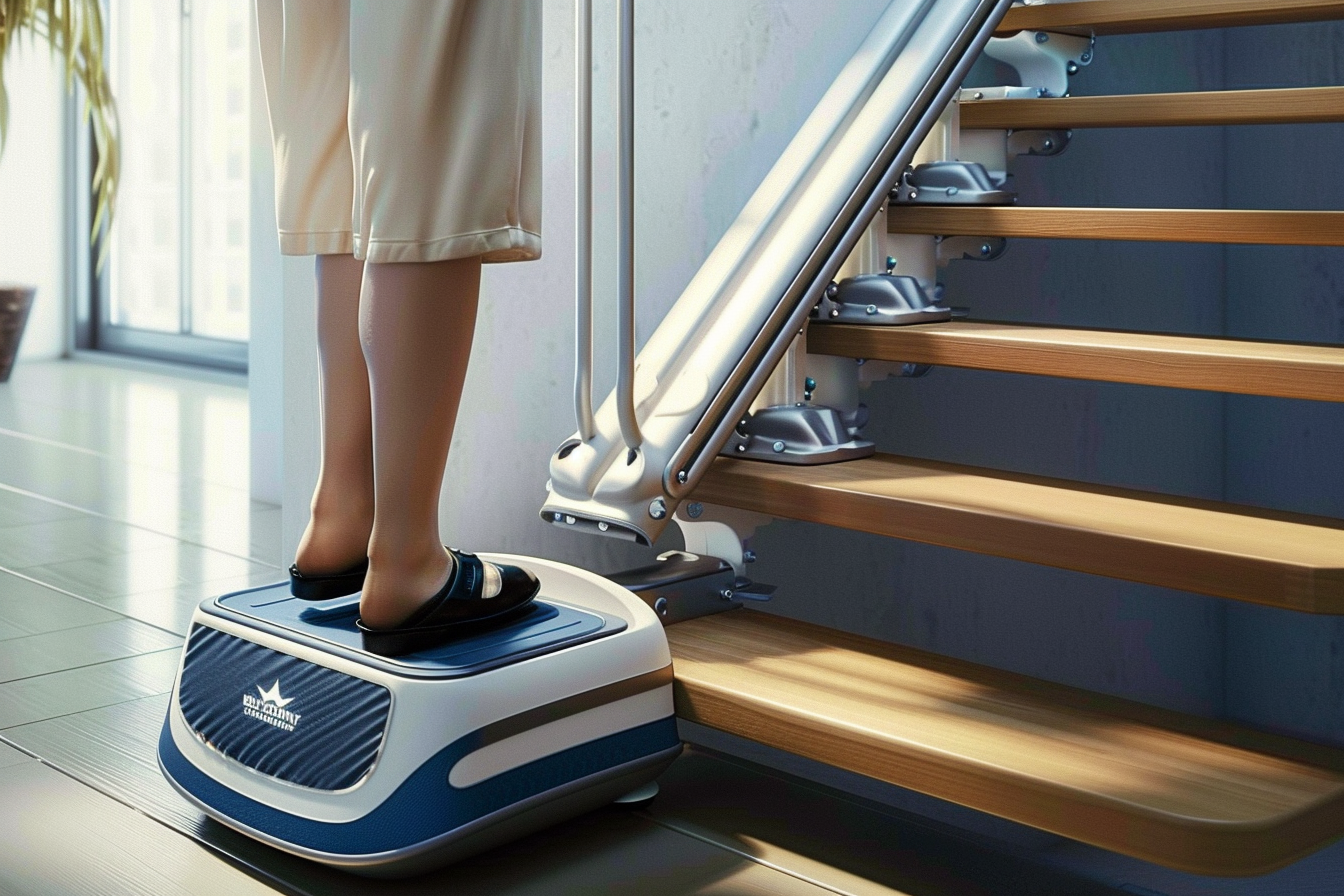Stair Lifts: Quick Installation Options for Indian Homes
Mobility challenges within multi-story homes can significantly impact daily life, especially for elderly family members or individuals with physical limitations. Stair lifts offer a practical solution, transforming staircases into accessible pathways. Modern advancements have made these devices more user-friendly, with installation processes that are faster and less invasive than ever before, making them an increasingly popular choice for Indian households seeking to improve home accessibility.

Stair lifts have become essential mobility aids in homes across India, particularly as the population ages and awareness about accessibility grows. These motorized devices help individuals navigate stairs safely and independently, eliminating the risk of falls and reducing physical strain. The technology has evolved considerably, with manufacturers focusing on ease of installation, portability, and user convenience. Understanding the installation process, timeline, and options available can help families make informed decisions about enhancing their home accessibility.
What Makes a Stair Lift Designed for Quick Home Installation?
A stair lift designed for quick home installation typically features modular components and simplified mounting systems that minimize structural modifications to your home. Unlike older models that required extensive carpentry work and permanent alterations, modern quick-install stair lifts use track systems that can be secured directly to the stair treads rather than the wall. This approach significantly reduces installation time and preserves the integrity of your home’s structure. The tracks are usually pre-fabricated to standard measurements, with customization options available for curved or uniquely shaped staircases. Many manufacturers now provide detailed installation guides and support, with some models designed specifically for DIY-friendly setup, though professional installation remains recommended for safety and warranty purposes. The electrical requirements are also simplified, often requiring only a standard household power outlet rather than dedicated wiring, which further streamlines the installation process.
How Does a Portable Stair Lift Installation Take Only a Few Hours?
The installation timeline for portable stair lifts has been dramatically reduced through engineering innovations and streamlined processes. A typical installation now takes between two to four hours for straight staircases, with curved installations requiring slightly longer, usually four to six hours. This efficiency is achieved through several factors: pre-assembled components that arrive ready to mount, standardized track systems that eliminate custom fabrication, and improved fastening mechanisms that secure quickly without extensive drilling. Professional installers arrive with the necessary tools and components, conducting a brief assessment before beginning the mounting process. The track is positioned and secured to the stairs, the chair unit is attached to the track, and electrical connections are made. Following installation, technicians conduct safety tests and provide user training. The minimal disruption to household activities is a significant advantage, as families can typically resume normal stair use within the same day. The quick installation also translates to lower labor costs, making these solutions more affordable for middle-class Indian families.
What Features Define an Easy-to-Install Stair Lift for Household Use?
An easy-to-install stair lift for household use incorporates design elements that prioritize simplicity without compromising safety or functionality. Key features include lightweight yet durable construction materials such as aluminum alloys, which make handling and positioning easier during installation. The track systems are designed with intuitive mounting brackets that align precisely with standard stair dimensions common in Indian homes. Many models feature battery backup systems that eliminate the need for hardwired electrical installations, instead using rechargeable batteries that charge while the lift is parked at charging points. The control systems are user-friendly, with simple toggle switches or remote controls that require minimal technical knowledge to operate. Folding seats and armrests allow the stair lift to occupy minimal space when not in use, an important consideration in Indian homes where space optimization is crucial. Safety sensors that detect obstacles and automatic braking systems are now standard, ensuring user protection without adding installation complexity. The modular design also means that components can be easily replaced or upgraded without removing the entire system.
Understanding Installation Requirements and Home Preparation
Before installing a stair lift, certain home preparation steps ensure a smooth process. The staircase width is a primary consideration, with most stair lifts requiring a minimum clear width of 28 to 30 inches to accommodate the track and seated user while leaving passage space. Staircases should be assessed for structural integrity, as the mounting system relies on secure attachment to the stair treads. Any loose or damaged steps should be repaired beforehand. The area should be cleared of carpets, runners, or other obstacles that might interfere with track placement, though some installers can work around existing floor coverings. Adequate lighting in the stairway area is important for both installation and future use. If the staircase has landings or turns, measurements become more critical, and curved rail systems may be necessary. Homeowners should also consider the location of electrical outlets, though as mentioned, many modern systems have flexible power requirements. Consulting with a professional installer for a home assessment before purchase can prevent compatibility issues and ensure the chosen model suits the specific staircase configuration.
Cost Considerations and Provider Comparison in India
The cost of stair lifts in India varies significantly based on type, features, and installation complexity. Straight stair lifts are generally more affordable, with prices ranging from approximately ₹1,50,000 to ₹3,50,000, including installation. Curved stair lifts, which require custom track fabrication, typically cost between ₹4,00,000 and ₹8,00,000 or more. Several reputable providers serve the Indian market, each offering different features and price points.
| Provider | Product Type | Key Features | Estimated Cost Range |
|---|---|---|---|
| Handicare India | Straight & Curved | Battery backup, compact design, safety sensors | ₹2,00,000 - ₹6,50,000 |
| Stannah Stairlifts | Straight & Curved | Slim track, swivel seat, remote controls | ₹2,50,000 - ₹7,00,000 |
| Acorn Stairlifts | Straight | Quick installation, foldable design, warranty | ₹1,80,000 - ₹3,00,000 |
| Bruno Independent Living | Straight & Outdoor | Weather-resistant options, customizable | ₹2,20,000 - ₹5,50,000 |
| ThyssenKrupp Access | Straight & Curved | German engineering, smooth operation | ₹2,80,000 - ₹8,00,000 |
Prices, rates, or cost estimates mentioned in this article are based on the latest available information but may change over time. Independent research is advised before making financial decisions.
When evaluating costs, consider not just the initial purchase price but also installation fees, warranty coverage, maintenance contracts, and potential repair costs. Many providers offer financing options or payment plans to make stair lifts more accessible. Government schemes and disability assistance programs may also provide partial funding in certain cases.
Maintenance and Long-Term Considerations
Once installed, stair lifts require minimal but regular maintenance to ensure safe operation. Most manufacturers recommend annual servicing by certified technicians, which typically costs between ₹3,000 and ₹8,000 depending on the model and service provider. Routine user maintenance includes keeping the track clean and free from debris, checking battery charge levels, and ensuring the seat belt and safety features function properly. The average lifespan of a well-maintained stair lift is 10 to 15 years, making it a worthwhile long-term investment for families. Battery replacement, usually needed every 2 to 5 years, costs approximately ₹8,000 to ₹15,000 depending on the model. Many providers offer extended warranty packages and annual maintenance contracts that can provide peace of mind and predictable costs. When selecting a stair lift, consider the availability of local service technicians and spare parts, as prompt service access is crucial for maintaining the device’s reliability and your family member’s independence.
Conclusion
Stair lifts represent a transformative accessibility solution for Indian homes, with modern quick-installation models making them more practical and affordable than ever before. The evolution toward portable designs and simplified installation processes means that families can enhance home accessibility with minimal disruption and reasonable timelines. By understanding the features that enable quick installation, comparing available providers, and considering long-term maintenance requirements, households can select the most appropriate stair lift solution for their specific needs. As awareness grows and technology continues to advance, these devices will play an increasingly important role in enabling elderly and mobility-challenged individuals to age in place safely and maintain their independence within familiar home environments.




